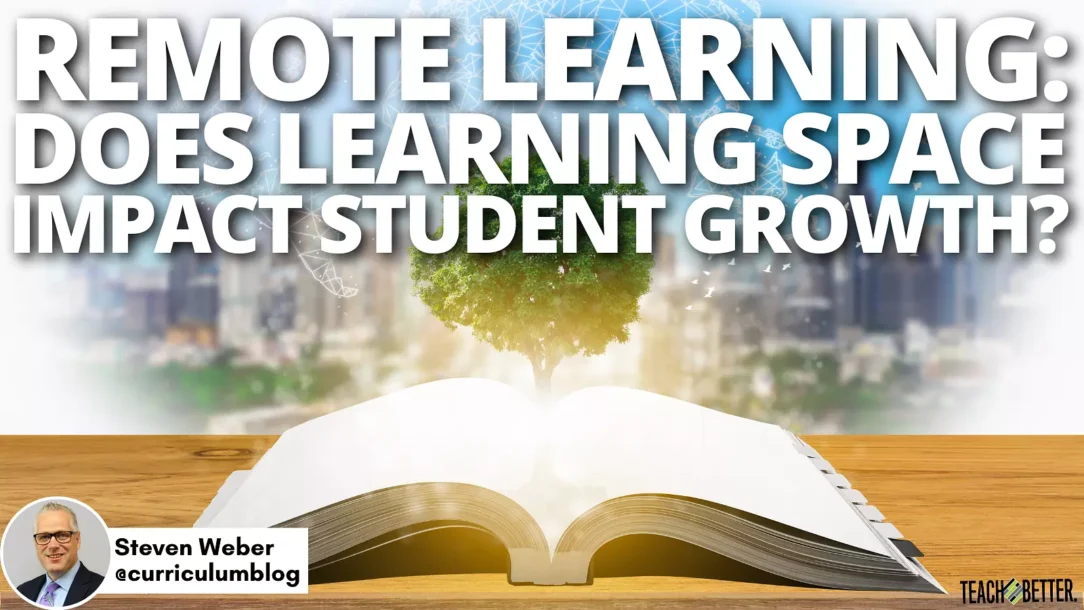TL;DR:
- The pandemic has caused a gap between students from access to resources, support, and learning environments.
- Students’ circumstances impacted their ability to learn creating interrupted and unfinished learning experiences.
- There was a vast difference in what students’ learning spaces were like outside of the classroom.
- Reflecting on what students have gone through and how this translates into our classrooms is necessary to move forward.
Since 2020, schools across the United States and around the world have closed due to the global pandemic. During this time, millions of students shifted to remote learning while schools were closed for onsite learning. Several school districts purchased Chromebooks or other devices for students prior to the pandemic. Some schools attempted to send home weekly packets with families until it became evident that the pandemic would last more than two weeks.
School districts quickly realized that a device was useless if students did not have access to broadband connectivity. A digital divide existed between school districts and students within communities. “‘One of the biggest challenges facing education right now is the digital divide, which is leaving many students without access to broadband connectivity,’ says Renee Patton, global director of education and healthcare at Cisco” (Torchia, 2021). Connectivity was only one of the barriers students experienced during remote learning.
Interrupted and unfinished education is a better way to frame the pandemic than the more commonly used term learning loss. Learning loss unfairly places the blame on the learner. Click To TweetLearning Space
Learning Space also impacted students as their homes became the classroom. Access and equitable opportunities impacted student growth over the past two years. During remote learning, some students studied from their beds, and other students participated in Zoom classrooms with their three siblings engaged in Zoom lessons in the same home.
Families who purchased high-speed internet packages often found that four students online at the same time of day impacted the quality of the lesson that one or more students received. Students would lose connectivity throughout whole group instruction. Or they would find it difficult to concentrate with their siblings all streaming videos throughout the day. “Education, then, beyond all other devices of human origin, is the great equalizer of the conditions of men…” (Mann, 1848). Is it possible that education was not the great equalizer during remote learning?
Learning Space vs. Learning Loss
Terms such as COVID Slide, Learning Loss, Pandemic Teaching, and Learning Gaps have been used to describe the impact of the pandemic on student learning. These terms are rarely used by educators. U.S. Secretary of Education Miguel Cardona shared, “Learning disruptions have been very real. As communities and as a country, we need to contend with the pandemic’s wide-ranging impacts on students and families. So many students have experienced interrupted and unfinished instruction” (Rebora, 2021).
Interrupted and unfinished education is a better way to frame the pandemic than the more commonly used term learning loss. Learning loss unfairly places the blame on the learner. Educators were able to look into students’ learning space, and it was evident that students were at an immediate disadvantage. Some students had access to classroom materials, one or two parents who could provide academic support and tutoring, and quiet learning spaces.
Learning Spaces During Remote Learning
Remote learning spaces varied among students within the same classroom. The following spaces provide a glimpse into the student experience.
Bedroom with a Desk
Some students were fortunate to have a bedroom that they did not share with any other siblings. The bedroom had a desk where students could participate in whole group lessons and complete assignments. This was not the norm, but some students had more privacy, and the desk was similar to classroom furniture.
Single Bedroom Apartment – Living Room
Some students shared the living room with their two siblings. They did not experience the privacy of a bedroom with a desk. The oldest child may have helped the two youngest students with their class assignments and with meals throughout the day. In several households, the adults went to work each day, and the oldest sibling took care of the younger siblings. Several students were able to thrive, even under these conditions. The impact of three siblings taking virtual classes in the same space undoubtedly impacted focus and the opportunity to learn.
Hotel Room
Several families live in a hotel or may have spent a few weeks in a hotel room during the pandemic. A hotel room is similar to living in a single bedroom apartment. Students may have completed their assignments in a timely manner, but there were inequities between students studying in a hotel room and students who had school materials, a home library, and more privacy during whole group instruction.
Office or Home Classroom
Some families converted a home office or a bonus room into a classroom. These classrooms had learning walls, math manipulatives, a whiteboard, earbuds, a microphone for students to communicate with their classmates during Zoom meetings, and a LEGO wall. High school students may have organized their assignments and used the space for privacy from other family members. Elementary-aged students may have benefited from a space that supported their learning targets and gave students a classroom free from distractions.
[scroll down to keep reading]Conclusion
As students returned to onsite instruction, it quickly became apparent that there was a wide readiness level between students. Family income, size of the house, connectivity, and the number of family members in a learning space were all factors in a student’s ability to learn. Some students are resilient and the learning space did not impact their ability to learn.
The pandemic disrupted students’ routines and the opportunity for all students to have equal access to materials, learning space, feedback, and timely academic support. During this time, educators reflected on the needs of each learner. Social and emotional learning has been discussed more than in recent years. Personalized learning was gaining popularity in schools before the pandemic. The topics that we may have valued in the pacing guide or our favorite unit may need to be revised in order to meet the needs of each learner. School teams could not control the learning space during remote learning, but they can begin to plan for the future by addressing the following questions.
Questions for School Teams
1. Did students experience inequities in Learning Space or Learning Loss?
2. How can we accelerate learning for all learners?
3. Which non-academic skills do we need to review and teach students?
4. How can counselors and social workers support students and help them reacclimate to school?
5. How can we create a strengths-based approach to teaching vs. a deficit approach?
6. What does a trauma-informed classroom look like?
7. How do we provide academic intervention and support in order to prepare each learner for the next level?
References
Mann, H. (1848). Twelfth annual report to the Massachusetts State Board of Education, 1848. Life and Works of Horace Mann, ed. Mrs. Mary Mann, vol. 3, p. 669 (1868).
Rebora, A. (2021). This is our moment: A conversation with U.S. secretary of education Miguel Cardona. ASCD. Retrieved from https://www.ascd.org/el/articles/this-is-our-moment.
Torchia, R. (2021). Why Connectivity Is Key to Inclusive Technology Options for Students. EdTech Magazine. Retrieved from https://edtechmagazine.com/k12/article/2021/07/why-connectivity-key-inclusive-technology-options-students.
About Steven Weber
Dr. Steven Weber is the Associate Superintendent for Teaching and Learning with Fayetteville Public Schools (AR). His areas of research include curriculum design, formative assessment, professional learning, and school leadership.




